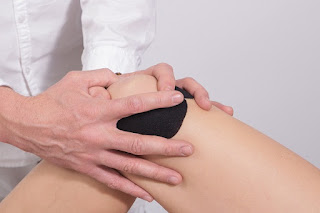Types of Fractures
When a bone of the body is broken, it is called a
fracture. It can be a small crack to a complete broken one. Often a bone is
broken when it is impacted by more pressure than it can tolerate or support.
For healing a fracture, often a plaster is placed to provide enough time, help
and support to the bone to heal by its own. However, at times, some fractures
are needed to be operated. The most common operations are done as replacementsurgeries. The other common type of surgery is arthroscopy surgery.
The damage to a bone varies and so does the types
of fractures. The most common ones are:
·
Avulsion
fracture – a muscle or ligament pull on the bone treated by ligament
surgeries.
·
Comminuted
fracture – the bone is shattered into many pieces.
·
Compression
(crush) fracture – generally occurs in the spongy bone in the spine. For
example, the front portion of a vertebra in the spine may collapse due to
osteoporosis.
·
Fracture
dislocation – a joint becomes dislocated, and one of the bones of the joint has
a fracture.
·
Greenstick
fracture – the bone partly fractures on one side, but does not break completely
because the rest of the bone can bend. This is more common among children,
whose bones are softer and more elastic.
·
Hairline
fracture – a partial fracture of the bone. Sometimes this type of fracture is
harder to detect with routine x-rays.
·
Impacted
fracture – when the bone is fractured, one fragment of bone goes into another.
·
Intra
articular fracture – where the break extends into the surface of a joint.
·
Longitudinal
fracture – the break is along the length of the bone.
·
Oblique
fracture – a fracture that is diagonal to a bone’s long axis.
·
Pathological
fracture – when an underlying disease or condition has already weakened the
bone, resulting in a fracture (bone fracture caused by an underlying
disease/condition that weakened the bone).
·
Spiral
fracture – a fracture where at least one part of the bone has been twisted.
·
Stress
fracture – more common among athletes. A bone breaks because of repeated stresses
and strains.
·
Torus
(buckle) fracture – bone deforms but does not crack. More common in children.
It is painful but stable.
·
Transverse
fracture – a straight break right across a bone.
ViVisit our webpage : https://www.lifeinmotionclinic.com/



Comments
Post a Comment